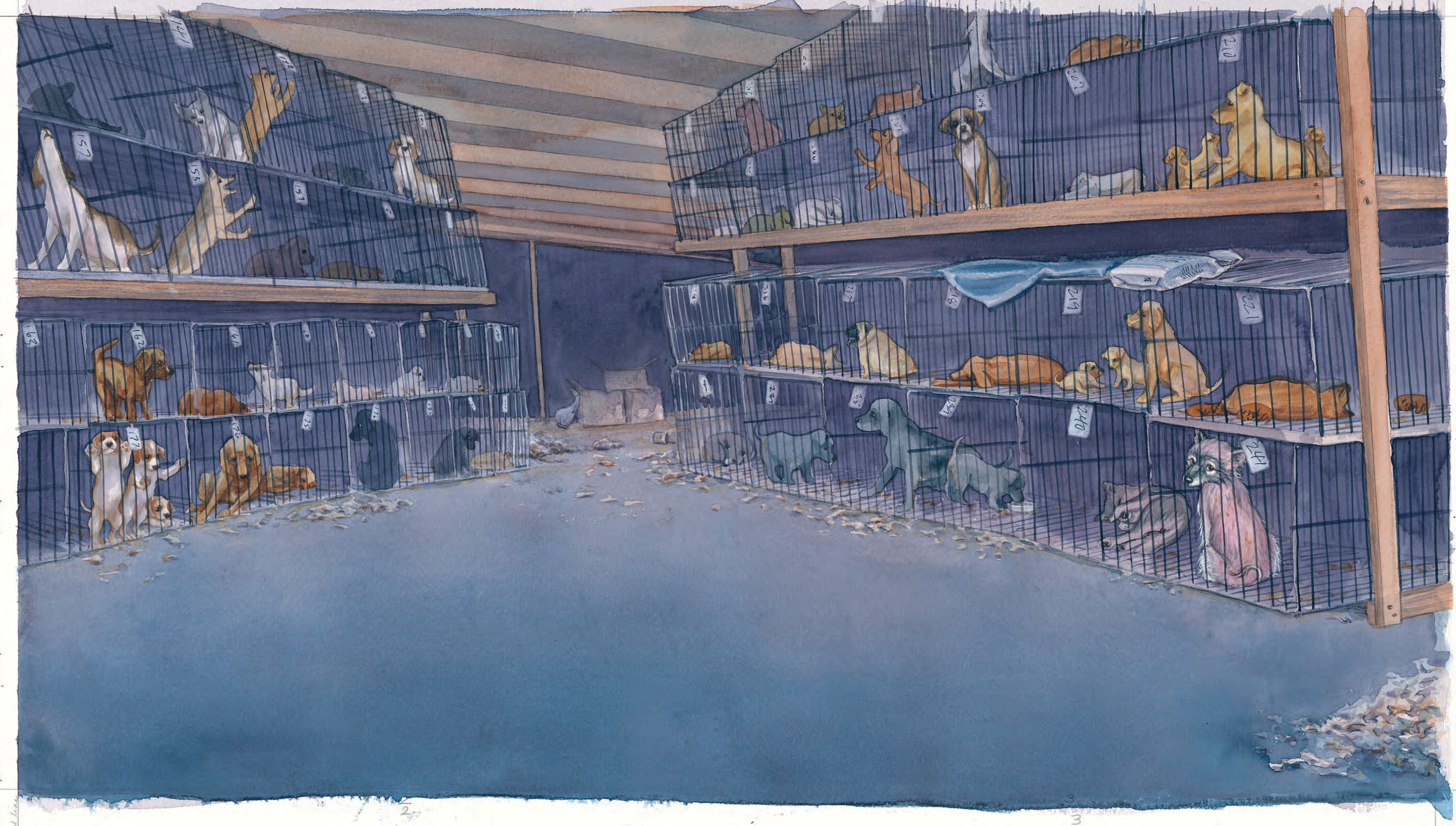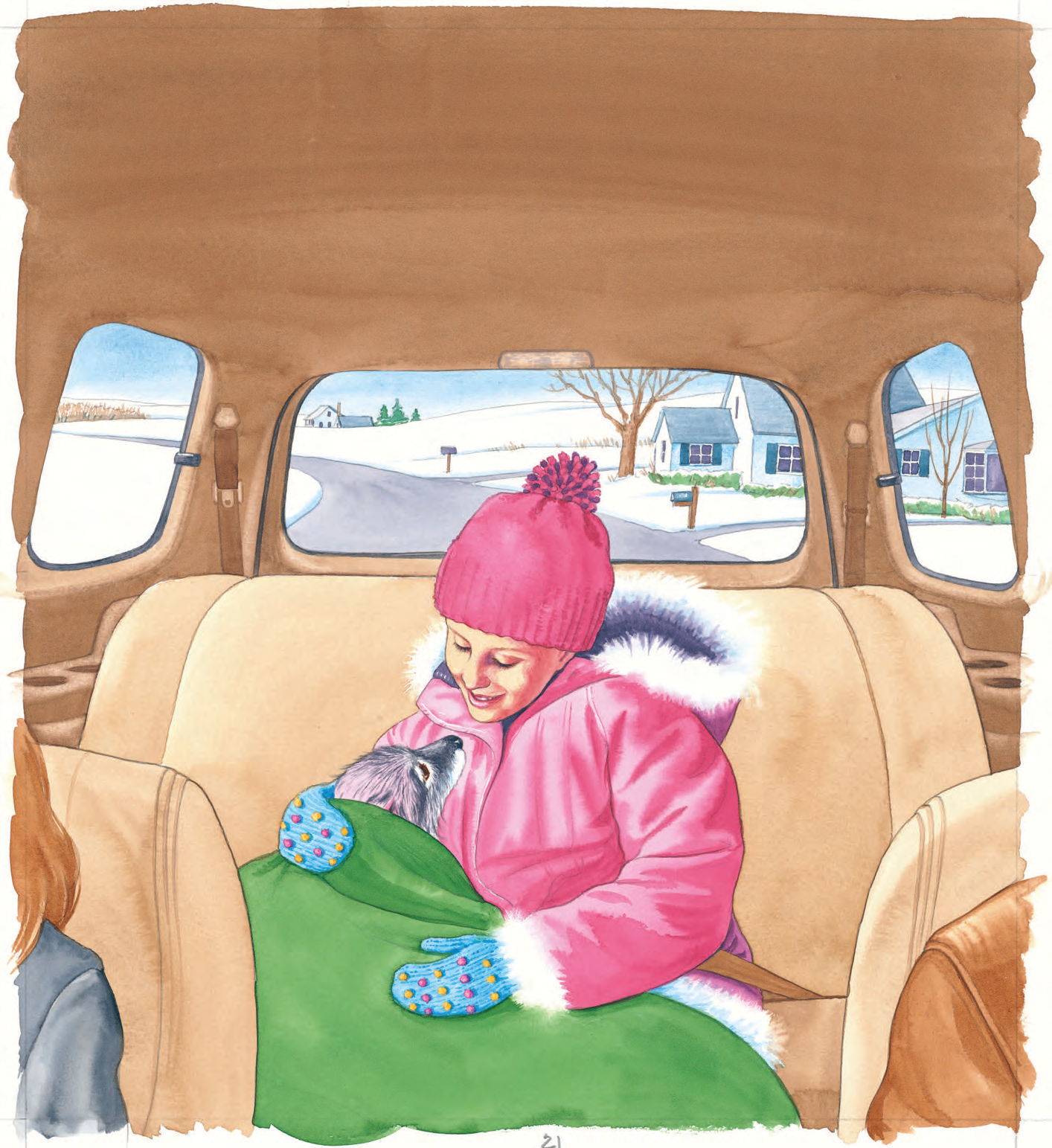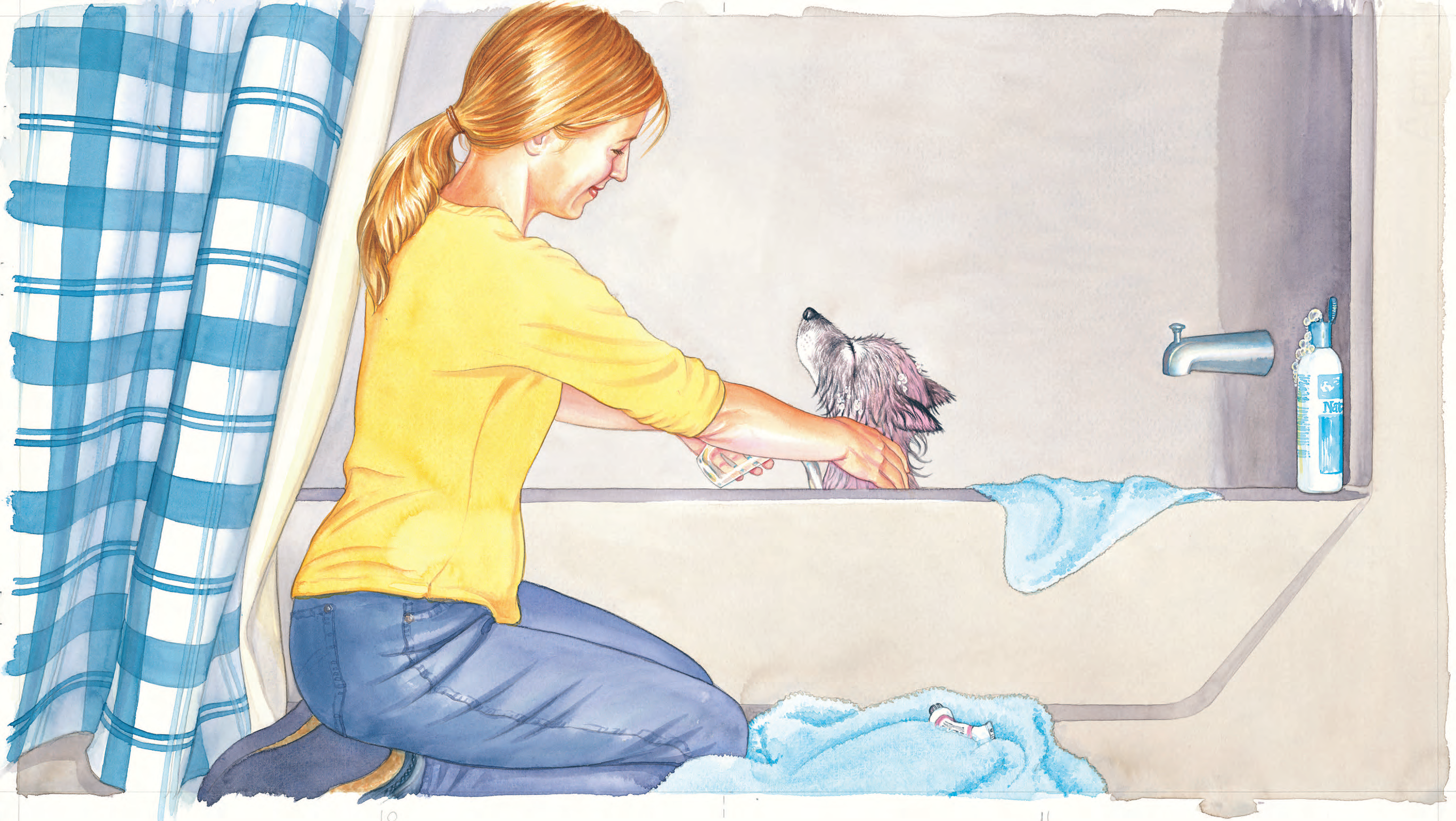
After rescue from a bleak puppy mill, Dog No. 241, renamed Dakota, journeys toward her forever home.
Dog No. 241 lives in a crate in a cold, dark barn that is stacked with hundreds of other caged dogs in a puppy mill breeding operation. She has never known human companionship, exercise, or decent care. One night, rescuers arrive and take her and the other dogs away to lead new and happier lives. Soon, despite her fears, she finds herself in a warm, secure foster home, being bathed and groomed and loved by a young woman named Emma. At first, she is too frightened to respond; all she wants is to return to the familiar dark.
Eventually renamed Dakota, she learns to love and trust Emma, and her foster home becomes a friendly haven. But then a new challenge arrives in the person of a young girl, Sweetie, who is recovering from a misfortune as deep as Dakota’s own. Sweetie and her parents come to look at Dakota as a possible pet. Initially, Sweetie rejects hairless little Dakota, but later she returns to offer Dakota a home, and Emma recommends her for adoption. With Emma’s reassurances, Dakota goes to her forever home to become Sweetie’s true partner in recovery.
Resources
Download Classroom Guide
Awards & Recognition
 2009 HSUS Kind Children Children’s Book Award, Winner, Best Children’s Picture Book of the Year
2009 HSUS Kind Children Children’s Book Award, Winner, Best Children’s Picture Book of the Year
 2008 Henry Bergh Children’s Book Award, Best Picture Book, Companion Animals
2008 Henry Bergh Children’s Book Award, Best Picture Book, Companion Animals
Editorial Reviews
School Library Journal
(Grade 1–3) From the touching cover illustration to the playful depictions of Dakota on the endpapers, this empathetic tale of a puppy-mill dog will resonate with animal lovers. Dakota is almost hairless and has sore feet from standing on the wire flooring of her cage. A volunteer, Emma, fosters her and eventually finds her a loving home. Dakota’s future owner, a girl who is sick and has lost her hair, at first rejects the pup because she considers her ugly, but she later bonds with the animal. This part of the story is not completely convincing. However, the illustrations of the dog enjoying her first bath and comfortable bed are wonderful. Lane also captures the pet’s vulnerability as she learns to walk and to enjoy companionship. The atrocious conditions and tragic lives of these creatures are briefly and accurately described. This sensitive portrayal will educate young readers through its poignant story and the brief facts provided at the end about helping such dogs.
— Carol Schene, formerly at Taunton Public Schools, MA



















